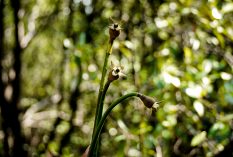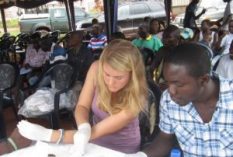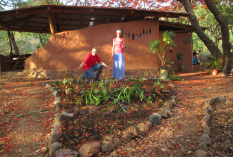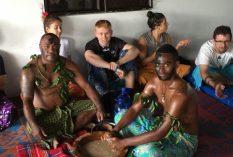One of the people working at our volunteer house is a Maasai. It is an African tribe with a very unique culture and lifestyle, and we were lucky to get the opportunity to go and visit his family. His father, who is the chief of the village, has nine wives (if I remember right) each of whom has their own hut in the village. The chief takes turns spending the night with each of them, depending on how he feels that day. Each wife has children who live in the hut with their mother.
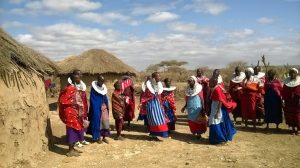 The huts are small and dark. It goes without saying that there is no electricity or running water there. Some dried giraffe skin on the floor constitutes a bed. Cooking is done by lighting an open fire on the floor, which kind of seems like a fire hazard considering that the roof of the hut is made of straw. The fire department in my home town might have a word or two to say about that!
The huts are small and dark. It goes without saying that there is no electricity or running water there. Some dried giraffe skin on the floor constitutes a bed. Cooking is done by lighting an open fire on the floor, which kind of seems like a fire hazard considering that the roof of the hut is made of straw. The fire department in my home town might have a word or two to say about that!
When Maasai children reach the age of 15, they are circumcised without exception (both boys and girls). Boys become Maasai warriors after this, but only if they are strong enough. If they cry or let out any sign of pain during the operation, they will get killed. Maasai warriors need to be strong in order to be able to hunt giraffes etc, so signs of weakness cannot be tolerated. Ultimately, the father makes the decision of what happens to the weak ones – instead of killing the child he may tell them to leave the village and never come back. Technically the same rules apply for Maasai girls, but as the operation for girls happens in private inside the huts (while boys are circumcised very publicly in front of the whole village), cries tend to be kept a secret.
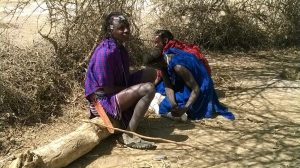 We witnessed a goat being slaughtered for lunch. The preferred method is suffocation, but the warriors agreed to cut its throat instead, even though a lot of blood goes to waste this way. Suffocation takes approximately 7 minutes so it is a slow and painful death, while cutting the throat is over in a few seconds. The warriors removed the skin and all organs in a very neat and organised manner. Then they drank the fresh blood from the carcass using their hand as a cup. Being offered blood is a great honour, but we all respectfully declined. Also, only three people in our group were brave enough to get a burn mark. I, as you can guess, was not one of them, although I had planned to do it. However, seeing the procedure made me change my mind pretty quickly! I guess I just don’t have what it takes to be a true Maasai warrior…
We witnessed a goat being slaughtered for lunch. The preferred method is suffocation, but the warriors agreed to cut its throat instead, even though a lot of blood goes to waste this way. Suffocation takes approximately 7 minutes so it is a slow and painful death, while cutting the throat is over in a few seconds. The warriors removed the skin and all organs in a very neat and organised manner. Then they drank the fresh blood from the carcass using their hand as a cup. Being offered blood is a great honour, but we all respectfully declined. Also, only three people in our group were brave enough to get a burn mark. I, as you can guess, was not one of them, although I had planned to do it. However, seeing the procedure made me change my mind pretty quickly! I guess I just don’t have what it takes to be a true Maasai warrior…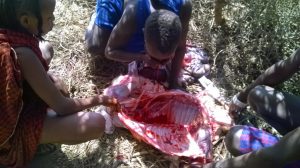
All this may sound very primitive, but there is also something quite appealing about the Maasai lifestyle. Putting aside all potential human right (and animal right) issues, there are some beautiful values in the way this tribe leads their lives. Strong family ties, hunting and gathering of all food (it doesn’t get more local or fresh or organic than this!) and living so far away from all the materialism and stress that people in western countries deal with are just a few examples. But then again, maybe they aren’t quite as non-modern and non-materialistic as they seem – it certainly surprised me to see a Maasai warrior pull out a mobile phone from inside his robes! Not something you see every day…
Nora participated in the Human Rights & Legal Aid Internship in Arusha, Tanzania. You can find accounts of the rest of her journey on the Global Nomadic Blog. If you want to experience the wonders of Tanzania for yourself, check out our available projects and get your application in today!.





